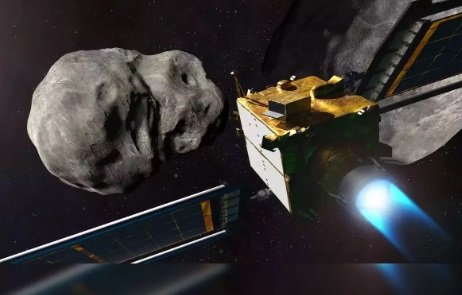
NASA’s Double Asteroid Redirection Test (DART) mission has etched its name in space history by achieving a monumental feat: successfully crashing a spacecraft into the asteroid moonlet Dimorphos. This mission marked a significant step in protecting Earth from future asteroid impacts by experimenting with methods to redirect potentially hazardous celestial objects.
What is Dimorphids: The First Human-Made Meteor Shower?
The most intriguing potential consequence of the DART mission could be the creation of the first human-made meteor shower, aptly named the “Dimorphids.” The collision with Dimorphos generated vast amounts of debris—over 2 million pounds, according to scientists. This material is now scattered into space, and within the next 10 to 30 years, it could enter Earth’s or Mars’ atmosphere, creating periodic meteor displays. If this happens, it would be the first meteor shower directly caused by human intervention in space, adding a unique layer to the mission’s legacy.
NASA’s DART Mission
Launched in 2021, the DART mission was NASA’s inaugural attempt at moving an asteroid off its trajectory. The mission aimed to demonstrate whether a spacecraft could alter the course of an asteroid through a “kinetic impact”—a technique where a spacecraft intentionally crashes into the target.
Dimorphos, a small moonlet orbiting the larger asteroid Didymos, was selected for its proximity to Earth and its relevance to other potentially threatening asteroids. Neither Dimorphos nor Didymos poses any danger to our planet, making the system a safe testing ground for this experiment. DART’s goal was to shorten Dimorphos’ orbit around Didymos, and it did just that. The spacecraft’s impact reduced the moonlet’s orbit by a full 33 minutes, proving that this method could be an effective defense against future asteroid threats.
Impact on Dimorphos
The collision did more than just alter Dimorphos’ orbit—it changed its shape, transforming it into a ‘triaxial ellipsoid,’ a more stretched and irregular form. This geological shift provides valuable insights into how asteroids may react to kinetic impacts, offering critical data for future missions.
Significance for Planetary Defense
The success of the DART mission is a breakthrough for planetary defense. For the first time, humanity has proven that we can alter the movement of a celestial body—an achievement that could one day save our planet from a catastrophic asteroid collision. The DART mission serves as a prototype for potential asteroid deflection strategies, ensuring that Earth has a line of defense against future cosmic threats.
As we await the potential meteor shower from the Dimorphids in the coming decades, NASA’s DART mission has solidified itself as a pioneering moment in both space exploration and planetary safety. The mission’s success not only strengthens Earth’s defense capabilities but also opens up the fascinating possibility of witnessing the first human-made meteor shower, a spectacle born from our pursuit of safeguarding the planet.

